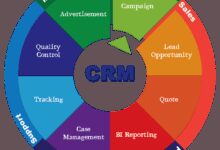b2b adidas: 7 Powerful Strategies for Explosive Growth
When it comes to dominating the global sportswear market, few brands carry the legacy and innovation of adidas. But behind the iconic three stripes lies a powerhouse B2B engine driving partnerships, wholesale networks, and enterprise-level collaborations—b2b adidas. This isn’t just about selling shoes; it’s about building ecosystems.
Understanding the b2b adidas Ecosystem

The b2b adidas model is far more complex than simple wholesale distribution. It’s a strategic network of partnerships, digital platforms, and supply chain integrations designed to empower retailers, distributors, and institutional clients. Unlike direct-to-consumer (DTC) models, b2b adidas focuses on scalability, long-term contracts, and co-branded opportunities that amplify brand reach without diluting value.
What Defines b2b adidas?
At its core, b2b adidas refers to all business-to-business operations conducted by the German sportswear giant. This includes supplying products to retail chains, licensing agreements, collaborations with fitness centers, and integration with e-commerce platforms. These relationships are not transactional but strategic, often involving data sharing, inventory forecasting, and joint marketing efforts.
- Wholesale distribution to global retailers
- Private label and co-branded product development
- Digital integration with partner platforms
The b2b adidas framework ensures that partners receive not just products, but support in logistics, branding, and market intelligence. This holistic approach strengthens the entire value chain.
How b2b adidas Differs from DTC
While adidas has invested heavily in its direct-to-consumer channels—like its official website and flagship stores—the b2b adidas arm remains critical for mass market penetration. DTC allows for tighter control over customer experience and margins, but b2b adidas enables exponential reach through established retail networks like Foot Locker, JD Sports, and Decathlon.
“Our b2b adidas strategy isn’t about replacing DTC—it’s about complementing it with scalable partnerships that extend our global footprint,” said a senior executive in adidas’ wholesale division.
Moreover, b2b adidas often involves bulk pricing, customized SKUs (stock-keeping units), and regional exclusivity deals, which are absent in DTC models. This makes the B2B channel indispensable for market expansion, especially in emerging economies.
Key b2b adidas Partnerships and Collaborations
One of the most visible strengths of b2b adidas is its ability to forge high-impact partnerships. These alliances go beyond simple supply agreements—they’re co-creative ventures that blend adidas’ design excellence with partners’ market expertise.
Major Retailer Alliances
adidas maintains deep relationships with some of the world’s largest sportswear retailers. For example, its long-standing partnership with Foot Locker includes exclusive product drops and in-store brand zones. These collaborations allow adidas to maintain visibility and desirability while leveraging Foot Locker’s vast distribution network.
- Exclusive product lines for partner retailers
- Co-branded marketing campaigns
- Integrated inventory and POS systems
Similarly, partnerships with JD Sports in Europe and SportsShoes in the UK enable adidas to dominate regional markets with tailored product offerings and localized promotions.
Institutional and Sports Organization Deals
Another pillar of b2b adidas is its work with sports federations, leagues, and educational institutions. adidas outfits national teams across football, basketball, and athletics, providing not just apparel but performance analytics and athlete support programs.
For instance, adidas has been the official kit supplier for the German national football team for decades. These deals are multi-year, multi-million-dollar contracts that reinforce brand credibility and provide massive exposure during international tournaments.
“Supplying national teams isn’t just about branding—it’s a statement of trust and performance,” notes industry analyst Maria Thompson of SportTech Insights.
Additionally, b2b adidas extends to universities and fitness chains like Anytime Fitness, where customized gear and bulk purchasing agreements strengthen brand loyalty at the grassroots level.
The Digital Transformation of b2b adidas
In recent years, b2b adidas has undergone a digital revolution. Gone are the days of faxed purchase orders and manual inventory tracking. Today, adidas leverages advanced e-commerce platforms, AI-driven demand forecasting, and real-time analytics to streamline its B2B operations.
adidas PRO: The B2B E-Commerce Platform
Central to this transformation is adidas PRO, the company’s dedicated B2B portal for verified business partners. This platform allows retailers, gyms, and institutions to browse catalogs, place orders, track shipments, and access marketing assets—all in one secure environment.
- Real-time inventory visibility
- Automated reordering and forecasting tools
- Custom pricing and volume discounts
adidas PRO also integrates with ERP systems like SAP and Oracle, enabling seamless data flow between adidas and its partners. This reduces errors, improves delivery times, and enhances overall operational efficiency.
AI and Data Analytics in b2b adidas
adidas uses artificial intelligence to predict regional demand, optimize production schedules, and personalize product recommendations for B2B clients. Machine learning models analyze historical sales data, social media trends, and even weather patterns to forecast which products will perform best in specific markets.
For example, if data shows a spike in demand for running shoes in Scandinavia during spring, b2b adidas can proactively allocate inventory and offer promotional bundles to Nordic retailers. This predictive capability gives partners a competitive edge and strengthens their reliance on adidas as a strategic ally.
“Data is the new currency in b2b adidas. The more we share and analyze, the better we serve our partners,” said Lars Meier, Head of Digital Commerce at adidas.
b2b adidas Supply Chain and Logistics Excellence
A robust supply chain is the backbone of any successful B2B operation, and b2b adidas excels in this domain. With manufacturing facilities across Asia, distribution hubs in Europe and North America, and last-mile delivery partnerships, adidas ensures timely and reliable product delivery worldwide.
Global Distribution Network
adidas operates a hybrid supply model combining owned warehouses and third-party logistics (3PL) providers. This flexibility allows the company to scale operations during peak seasons—like holiday shopping or major sporting events—without overextending fixed costs.
- Regional distribution centers in Germany, USA, and China
- Just-in-time inventory systems for high-turnover items
- Sustainable packaging and carbon-neutral shipping options
Partners in the b2b adidas network benefit from guaranteed lead times, real-time shipment tracking, and dedicated account managers who resolve logistical issues swiftly.
Sustainability in the b2b adidas Supply Chain
Sustainability is no longer optional—it’s a business imperative. b2b adidas has committed to reducing its carbon footprint by 30% by 2030, in line with the Paris Agreement. This includes using recycled materials, minimizing waste, and partnering with eco-conscious logistics providers.
For instance, adidas’ “Primeblue” and “Primegreen” product lines, made from recycled ocean plastic and sustainable polymers, are now available through b2b channels. Retailers who stock these eco-friendly lines can appeal to environmentally conscious consumers while aligning with global ESG (Environmental, Social, and Governance) standards.
“Sustainability isn’t a trend—it’s a transformation. Our b2b adidas partners are key allies in this mission,” stated Katja Schreiber, adidas’ VP of Sustainable Business.
Marketing and Brand Support in b2b adidas
One of the most underrated aspects of b2b adidas is the level of marketing support provided to partners. Unlike some brands that leave promotion to retailers, adidas actively collaborates on campaigns, provides co-op advertising funds, and supplies ready-to-use digital assets.
Co-Branded Campaigns and Promotions
adidas frequently runs joint marketing initiatives with its B2B partners. For example, during the launch of the Ultraboost 23, adidas partnered with Zalando to create an exclusive online event featuring athlete appearances and limited-edition colorways.
- Shared advertising budgets (co-op marketing)
- Exclusive product launches for partner channels
- Integrated social media campaigns
These campaigns not only drive sales but also strengthen the brand equity of both adidas and its partners. The synergy creates a win-win scenario where visibility and customer engagement are maximized.
Marketing Assets and Training Programs
Through the adidas PRO portal, partners gain access to a library of high-resolution images, videos, product descriptions, and even AR (augmented reality) tools for virtual try-ons. Additionally, adidas offers training programs for retail staff to better understand product features, technologies like Boost and 4D printing, and brand storytelling.
This educational component ensures that frontline employees can effectively communicate the value of adidas products, leading to higher conversion rates and customer satisfaction.
“When our sales team understands the technology behind a shoe, they sell with confidence—and that translates to revenue,” said a store manager at a major European sports retailer.
Challenges Facing b2b adidas
Despite its strengths, b2b adidas is not without challenges. The rise of DTC models, increasing competition from Nike and Puma, and shifting consumer preferences pose ongoing threats to the traditional wholesale model.
Competition from Direct-to-Consumer Channels
As adidas invests more in its own DTC channels, there’s a risk of channel conflict. Retailers may feel sidelined if exclusive products are launched only on adidas.com or in flagship stores. This tension requires careful balancing to maintain trust and collaboration within the b2b adidas network.
To mitigate this, adidas has adopted a “phygital” strategy—blending physical and digital experiences across all channels. For example, customers can buy online and pick up in-store (BOPIS) at partner retailers, ensuring that third-party sellers remain relevant in the customer journey.
Supply Chain Disruptions and Geopolitical Risks
Global events like the pandemic, shipping container shortages, and geopolitical tensions have exposed vulnerabilities in global supply chains. b2b adidas has had to adapt quickly, diversifying suppliers and increasing inventory buffers to prevent stockouts.
Moreover, trade regulations and tariffs—especially between the US and China—can impact pricing and delivery timelines. adidas responds by localizing production where feasible and investing in nearshoring initiatives in Eastern Europe and Mexico.
“Resilience is built through agility. Our b2b adidas operations must be flexible enough to withstand shocks while maintaining service levels,” emphasized supply chain director Anika Weber.
Future Trends Shaping b2b adidas
The future of b2b adidas is being shaped by innovation, digitalization, and sustainability. As consumer expectations evolve, so too must the way adidas engages with its business partners.
Expansion of Digital Marketplaces
adidas is exploring the creation of a global B2B marketplace where verified partners can not only buy products but also trade excess inventory, collaborate on designs, and access financing options. This platform would function like an ecosystem, fostering collaboration beyond simple transactions.
- Peer-to-peer inventory exchange among retailers
- AI-powered design collaboration tools
- Integrated payment and credit solutions
Such a marketplace could revolutionize how b2b adidas operates, turning it from a supplier into a facilitator of business growth.
Personalization and On-Demand Manufacturing
Customization is the next frontier. b2b adidas is testing on-demand manufacturing models where partners can order small batches of personalized products—such as team-branded apparel or limited-run sneakers—without the risk of overstocking.
Using 3D printing and automated cutting technologies, adidas can produce customized items quickly and cost-effectively. This empowers partners to offer unique products that differentiate them from competitors.
“The future of b2b adidas is hyper-personalization at scale,” predicted innovation lead Julian Hartmann.
What is b2b adidas?
b2b adidas refers to the business-to-business operations of the adidas Group, including wholesale distribution, partnerships with retailers and institutions, digital commerce platforms like adidas PRO, and collaborative marketing initiatives. It’s a strategic arm that enables adidas to scale globally through alliances rather than relying solely on direct sales.
How can a business become a b2b adidas partner?
Businesses can apply to become b2b adidas partners through the official adidas PRO portal. Eligibility typically requires a registered business entity, a physical or online retail presence, and compliance with adidas’ brand standards. Once approved, partners gain access to catalogs, pricing, and marketing support.
Does b2b adidas offer exclusive products?
Yes, b2b adidas frequently offers exclusive product lines and limited-edition releases to key retail partners. These exclusives help drive foot traffic and online engagement for retailers while strengthening their relationship with the adidas brand.
Is sustainability a focus in b2b adidas operations?
Absolutely. Sustainability is a core pillar of b2b adidas, with initiatives including eco-friendly materials (like Primeblue), carbon-neutral shipping, and waste reduction in packaging. Partners are encouraged to adopt these practices to align with global ESG goals.
How does adidas support marketing for its B2B partners?
adidas provides extensive marketing support, including co-branded campaigns, co-op advertising funds, digital asset libraries, and staff training programs. This ensures that partners can effectively promote adidas products and maximize sales potential.
The b2b adidas model is a masterclass in strategic partnership, digital innovation, and sustainable growth. By combining global reach with localized support, adidas continues to strengthen its position as a leader in the sportswear industry. Whether through cutting-edge e-commerce platforms, AI-driven logistics, or co-creative marketing campaigns, b2b adidas is not just surviving the retail revolution—it’s leading it. For businesses looking to align with a brand that values performance, innovation, and responsibility, b2b adidas offers a powerful pathway to success.
Further Reading:









